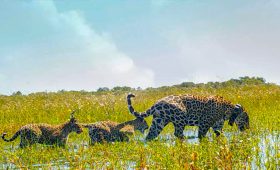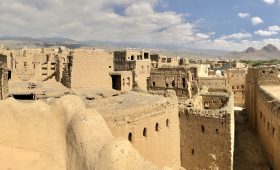Exploring the Aral Sea
Uzbekistan offers more than just the historical allure of Samarkand and Bukhara. The Aral Sea, once a vast lake, now stands as a poignant symbol of environmental change. This article delves into its history, current state, and what makes it a unique destination.
The History of the Aral Sea
The Aral Sea’s history stretches back thousands of years. It was once a thriving ecosystem, home to a variety of fish and supporting local communities through fishing and trade. However, in the 20th century, the Soviet Union diverted the Amu Darya and Syr Darya rivers to irrigate cotton fields, drastically reducing the sea’s size. This diversion led to a significant ecological disaster, transforming the area into a barren landscape.
Unique Features of the Aral Sea
1. The Ship Graveyard
As the sea receded, it left behind a haunting ship graveyard. These stranded vessels, once part of a bustling fishing industry, now rest on the desert sands. They serve as stark reminders of the sea’s former expanse and the environmental impact of human intervention.
2. The Abandoned Port Towns
Along the former coastline, you’ll find ghost towns that once thrived on the sea’s bounty. These abandoned settlements offer a glimpse into a past way of life, disrupted by the sea’s retreat. Walking through these towns provides a sobering reflection on the consequences of altering natural landscapes.
3. The Aral Sea Ecological Disaster Museum
To grasp the full extent of the Aral Sea’s transformation, visit the Aral Sea Ecological Disaster Museum. The museum features photographs, interactive exhibits, and personal accounts that document the sea’s decline. It’s an educational experience that underscores the importance of environmental stewardship.
Best Time to Visit
Plan your visit during spring or autumn when the weather is mild. Summers can be extremely hot, and winters are harshly cold. Checking local weather forecasts before your trip is advisable to ensure comfortable exploration conditions.
How to Get There
Reaching the Aral Sea requires careful planning. The nearest major city is Nukus, accessible via domestic flights from Tashkent, Uzbekistan’s capital. From Nukus, hiring a local guide or joining a tour is recommended to navigate the challenging terrain to the Aral Sea. The journey can be demanding due to limited infrastructure.
Local Transportation
Transportation options around the Aral Sea are scarce. Most visitors rely on off-road vehicles or camels to explore the area. It’s crucial to arrange transportation in advance and bring sufficient supplies, as amenities are limited.
Summary of Facts
- The Aral Sea was once among the world’s largest lakes.
- Human intervention led to its decline, resulting in an environmental disaster.
- The ship graveyard and abandoned port towns are notable features.
- The Aral Sea Ecological Disaster Museum provides educational insights.
- Spring and autumn are the best times to visit.
- Travel to Nukus is necessary, with further arrangements required to reach the sea.
- Local transportation is limited; off-road vehicles or camels are commonly used.



